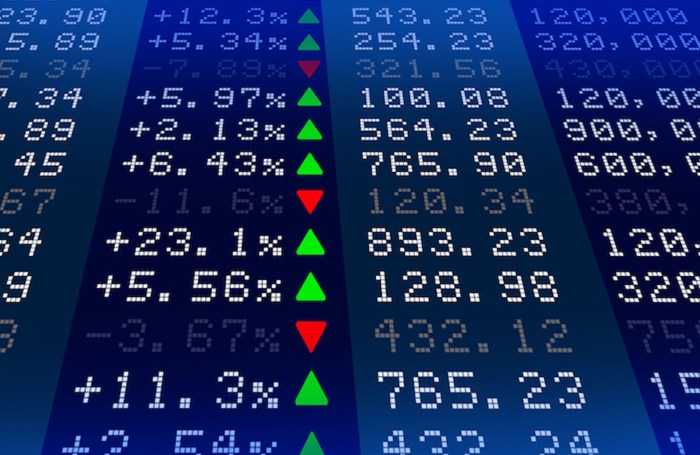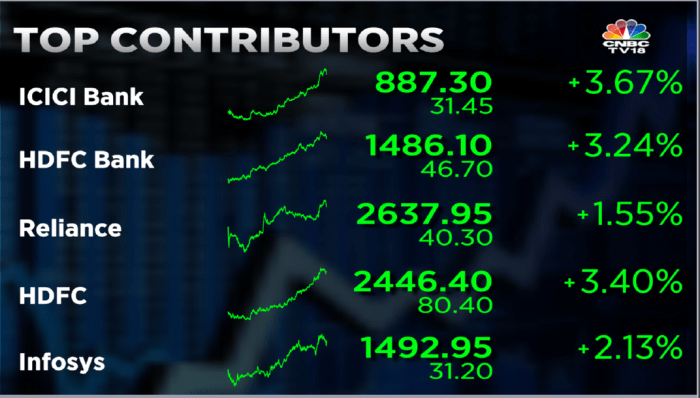Market Price Per Share of Common Stock
Defining Market Price Per Share
The market price per share of common stock represents the current price at which a single share of a company’s stock is trading on a stock exchange. This price is a dynamic figure, constantly fluctuating based on a multitude of factors, both internal and external to the company itself. Understanding these factors is crucial for investors and analysts alike.
Components Influencing Market Price Per Share
Several interconnected elements contribute to the market price of a stock. Supply and demand play a fundamental role; high demand relative to supply pushes the price upward, while the opposite leads to a decline. Company performance, including earnings, revenue growth, and profitability, significantly influences investor perception and, consequently, the market price. Furthermore, broader macroeconomic conditions, such as interest rates and inflation, impact investor risk appetite and overall market sentiment, affecting stock prices across the board.
Finally, investor sentiment and speculation can cause short-term volatility irrespective of underlying fundamentals.
Market Price versus Intrinsic Value, Market price per share of common stock
The market price is the actual price at which a stock trades, while the intrinsic value represents the perceived true worth of a company’s stock based on a fundamental analysis of its assets, earnings, and future prospects. These two values often diverge. A stock may trade above its intrinsic value (overvalued) due to market hype or speculation, or it may trade below its intrinsic value (undervalued) due to temporary market pessimism or a lack of investor awareness.
Factors Causing Short-Term Market Price Fluctuations
Short-term fluctuations in market price are common and often driven by news events, such as unexpected earnings announcements, changes in management, or significant industry developments. Speculative trading, driven by investor sentiment and market psychology, also contributes to these short-term swings. For instance, a positive earnings surprise might lead to a temporary surge in price, while negative news could trigger a sharp drop, even if the long-term prospects of the company remain strong.
Market Price Comparison of Companies in the Same Industry
| Company Name | Current Market Price (USD) | 52-Week High (USD) | 52-Week Low (USD) |
|---|---|---|---|
| Company A | 150 | 175 | 120 |
| Company B | 200 | 225 | 180 |
| Company C | 100 | 115 | 85 |
Factors Affecting Market Price
Impact of Macroeconomic Factors
Macroeconomic factors, such as interest rates and inflation, significantly influence market prices. Higher interest rates generally increase borrowing costs for companies, potentially reducing investment and slowing economic growth, which can negatively impact stock prices. Inflation erodes purchasing power and can lead to increased input costs for businesses, impacting profitability and thus stock valuations. For example, during periods of high inflation, investors may shift their investments to assets that provide a hedge against inflation, leading to lower demand for stocks in some sectors.
Influence of Company-Specific News
Company-specific news, including earnings reports, product launches, and regulatory announcements, can have a substantial impact on market price. Positive news often leads to increased investor confidence and higher demand, driving up the price. Conversely, negative news can trigger selling pressure and lower prices. For example, the announcement of a new groundbreaking product could generate significant excitement, causing a surge in the stock price, while a profit warning might cause a sharp decline.
Role of Investor Sentiment and Market Psychology
Investor sentiment and market psychology play a crucial role in determining market price. Periods of optimism and exuberance can lead to inflated valuations, while fear and uncertainty can cause sharp price drops. Herding behavior, where investors follow the actions of others, can amplify these effects, creating market bubbles or crashes. The dot-com bubble of the late 1990s is a prime example of how investor euphoria can lead to unsustainable price increases, followed by a dramatic correction.
Industry Trends Affecting Market Price
Industry trends significantly influence the market price of common stock within specific sectors. Technological advancements, regulatory changes, and shifts in consumer preferences can all impact a company’s prospects and its stock price. For example, the rise of e-commerce has significantly impacted the retail industry, with some companies thriving and others struggling to adapt, resulting in diverging stock price performances.
Understanding the market price per share of common stock is crucial for investors. This price fluctuates throughout the trading day and continues to move even after regular trading hours; you can check the current movement by looking at the hpq after hours stock price. Therefore, monitoring these after-hours changes provides a more complete picture of the market price per share of common stock for HPQ.
Market Price Data Sources and Interpretation
Reliable Sources for Real-Time Market Price Data
Several reliable sources provide real-time market price data. Major financial news websites (such as Yahoo Finance, Google Finance, Bloomberg) offer comprehensive data on stock prices, along with other financial information. Dedicated financial data providers (like Refinitiv, FactSet) offer more in-depth data and analytical tools, typically for a subscription fee. Stock exchanges themselves also provide official price data.
Methods for Interpreting Market Price Data
Interpreting market price data requires considering various factors. Comparing a company’s market price to its historical performance, as well as to its competitors, provides valuable context. Analyzing financial ratios, such as the Price-to-Earnings (P/E) ratio, can help assess whether a stock is overvalued or undervalued relative to its earnings. Furthermore, examining industry trends and macroeconomic conditions helps to understand the broader forces shaping the market price.
Visual Representation of Market Price Changes
A line graph illustrating the market price of a hypothetical growth stock over time would typically show an upward trend, with periods of both growth and consolidation. The graph would start at a low price, then gradually increase, with some fluctuations along the way. Steeper upward slopes would represent periods of rapid growth, while flatter sections would indicate periods of slower growth or consolidation.
The overall pattern would demonstrate a long-term upward trend, reflecting the growth potential of the company.
Comparison of Charting Techniques
Various charting techniques are used to analyze market price trends. Line charts display price movements over time, providing a clear visual representation of trends. Bar charts can show daily or weekly price changes. Candlestick charts offer more detailed information, including opening, closing, high, and low prices for each period. Each technique provides a unique perspective, and the choice depends on the specific analysis needs.
Market Price and Investment Strategies: Market Price Per Share Of Common Stock

Source: stockprice.com
Market Price in Investment Strategies
Market price is a central element in various investment strategies. Value investors seek undervalued stocks, where the market price is below the intrinsic value. Growth investors focus on companies with high growth potential, often willing to pay a premium (higher market price) for future returns. Day traders utilize short-term price fluctuations to profit from small price changes. Long-term investors are less concerned with short-term price movements and focus on the long-term growth potential of the company.
Determining Overvalued or Undervalued Stocks
Several approaches determine if a stock is overvalued or undervalued. Comparing the market price to the company’s intrinsic value, calculated using discounted cash flow analysis or other valuation methods, is a common approach. Analyzing financial ratios, such as the P/E ratio, relative to industry averages and historical performance, can also provide insights. Considering market sentiment and broader economic conditions is also crucial.
Implications of Market Price for Different Investors
Market price has different implications for different investor types. Long-term investors are less affected by short-term fluctuations and focus on long-term growth. Short-term investors, such as day traders, are highly sensitive to price changes and aim to profit from short-term volatility. Value investors look for discrepancies between market price and intrinsic value, while growth investors prioritize companies with high growth potential, even if the market price is already high.
Steps in Using Market Price Data for Informed Investment Decisions
- Research the company’s fundamentals.
- Analyze financial statements and ratios.
- Assess industry trends and competitive landscape.
- Consider macroeconomic factors.
- Monitor market price and trading volume.
- Evaluate investor sentiment.
- Diversify investments.
- Develop a clear investment strategy.
Market Price and Company Valuation
Relationship Between Market Price and Valuation Metrics
Market price is directly related to company valuation metrics. Market capitalization, the total market value of a company’s outstanding shares, is calculated by multiplying the market price per share by the number of outstanding shares. The P/E ratio compares the market price to the company’s earnings per share, providing insights into investor expectations for future earnings growth. Other valuation metrics, such as Price-to-Sales (P/S) and Price-to-Book (P/B) ratios, also use market price as a key component.
Market Price as an Indicator of Company Health

Source: in.com
Market price can reflect a company’s overall health and prospects. A consistently rising market price often indicates strong investor confidence and positive future expectations. Conversely, a persistently declining market price may signal concerns about the company’s performance or prospects. However, it’s crucial to remember that market price can be influenced by factors beyond the company’s direct control, such as broader market sentiment or macroeconomic conditions.
Market Price Signaling Shifts in Investor Expectations
Changes in market price can signal shifts in investor expectations about future company performance. A sudden surge in price may reflect positive news or increased optimism, while a sharp drop could indicate negative news or growing concerns. Analyzing these price movements, in conjunction with other information, can provide insights into how investor sentiment is evolving.
Hypothetical Scenario of Market Price Deviation from Intrinsic Value
Imagine a company with strong fundamentals and a high intrinsic value, but its market price remains significantly lower due to temporary market pessimism or a lack of investor awareness. This undervaluation presents an opportunity for value investors. However, if the market remains pessimistic for an extended period, the company might face challenges securing funding or attracting talent, potentially impacting its long-term prospects.
Conversely, a situation where market price significantly exceeds intrinsic value suggests a potential bubble, and a price correction could lead to substantial losses for investors.
Clarifying Questions
What is the difference between market price and book value?
Market price reflects the current trading price of a stock, while book value represents the net asset value of a company as shown on its balance sheet. These values often differ significantly.
How often is the market price updated?
Market prices are typically updated in real-time throughout the trading day, reflecting the most recent transactions.
Can market price predict future performance?
While past market price trends can offer insights, they are not a reliable predictor of future performance. Many other factors influence a company’s future success.
Where can I find reliable historical market price data?
Reputable financial websites and data providers (e.g., Yahoo Finance, Google Finance) offer access to historical market price data.




















